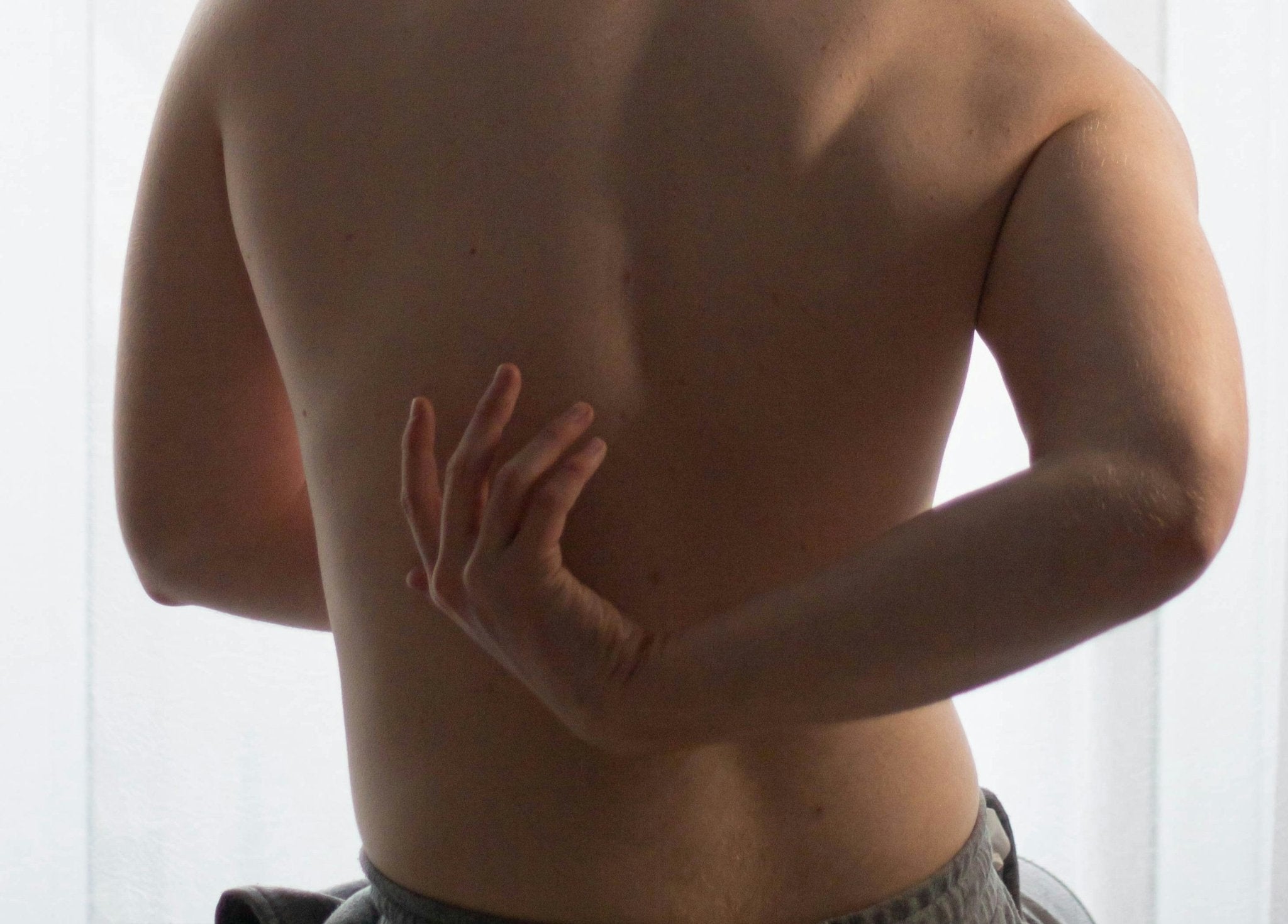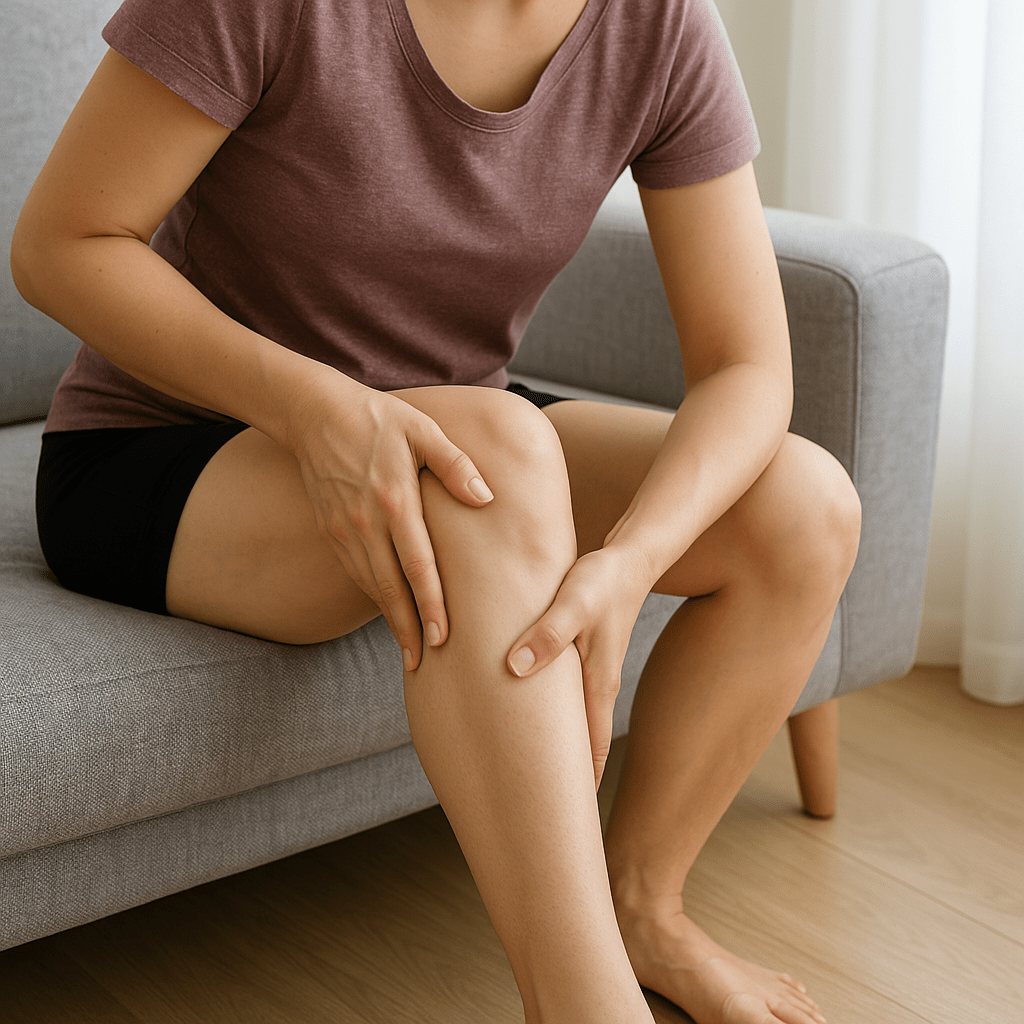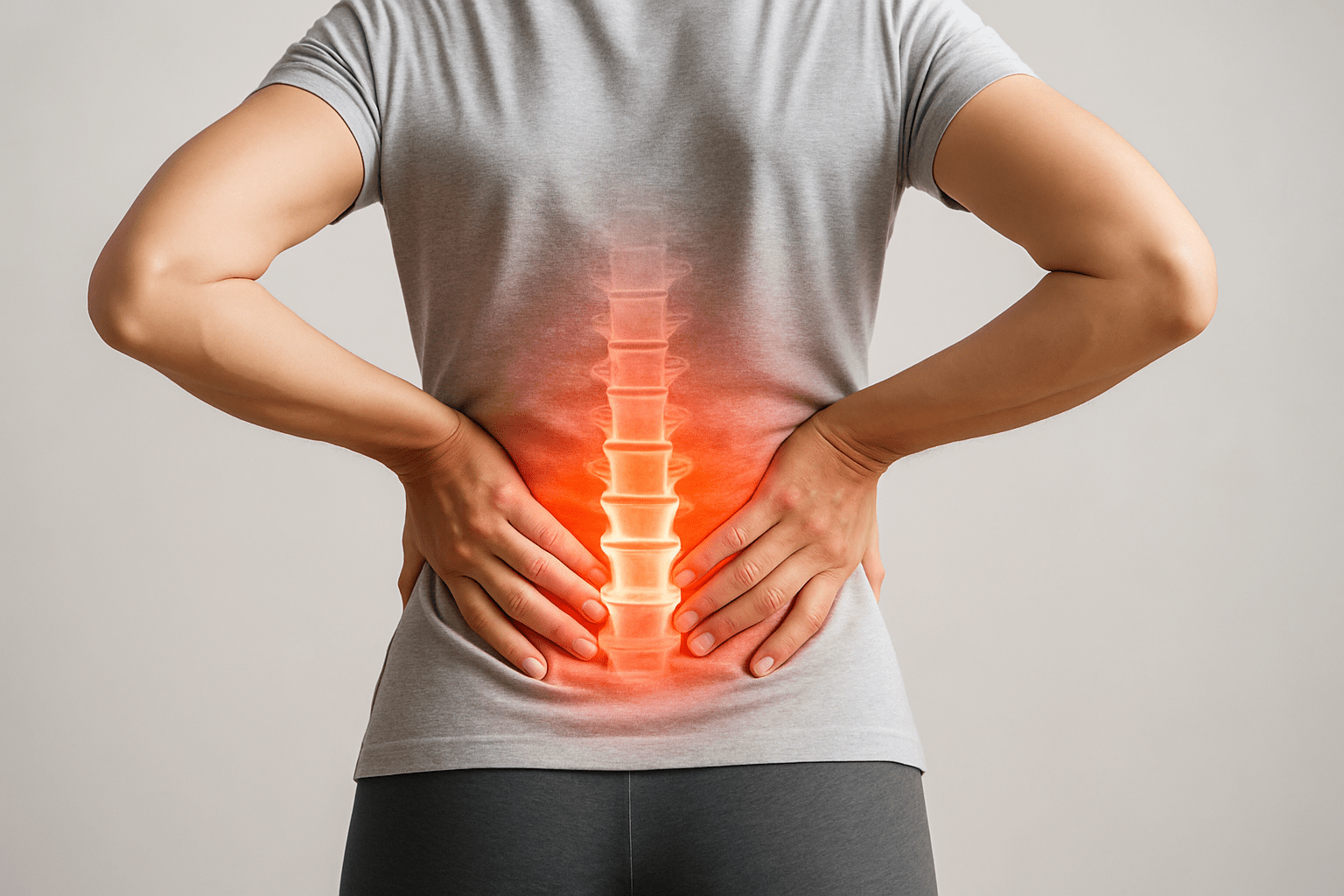What helps against back pain?
Almost everyone is familiar with back pain. Whether it occurs suddenly or creeps in over a longer period of time, it can quickly turn everyday life into a burden. In fact, around 60-80 percent of people will struggle with back pain at least once in their lives. An incredible 26.2 million people in Germany alone received medical treatment for back pain in 2021. At 31.4 percent, this corresponds to almost a third of the population. Back pain is therefore one of the most common complaints. Whether due to incorrect posture, lack of exercise or stress - the causes are varied and often difficult to avoid But why is back pain so widespread and, above all, what helps against back pain?


Almost everyone is familiar with back pain. Whether it occurs suddenly or creeps in over a longer period of time, it can quickly turn everyday life into a burden. In fact, around 60-80 percent of people struggle with back pain at least once in their lives.
An incredible 26.2 million people in Germany alone received medical treatment for back problems in 2021. At 31.4 percent, this corresponds to almost a third of the population. This makes back pain one of the most common complaints. Whether due to incorrect posture, lack of exercise or stress - the causes are varied and often difficult to avoid
But why is back pain so widespread and, more importantly, what helps against back pain? There are many ways and exercises to prevent and treat back pain. In this article, you will find out more about possible forms and causes and how you can relieve back pain - with massages for back pain, targeted exercises and a simple way to bring relaxation into your home.
Reading tip: In our article "From head to toe: where massages can help" you can find out all about the many different uses of massages.
Important note: Even if we tell you what can help against back pain, this article does not replace advice from a doctor. If your symptoms persist, please consult a healthcare professional to discuss the suitability of any treatment steps for your individual problem.
What is back pain? - Symptoms, forms and causes
Everyone has certainly experienced some form of back pain at least once in their lives. However, as the back covers a large part of the body, not all back pain is the same and there are many different symptoms, forms and causes.
In general, this is pain that occurs in the spine and can radiate to various parts of the back. It can be acute or chronic and can range from mild discomfort to severe pain that restricts movement.
In Germany, back pain is one of the most common causes of visits to the doctor's surgery and incapacity to work. The triggers are many and varied, including muscle tension, disc problems, injuries or poor posture. In order to know what helps against back pain, you should therefore define your own pain.
Reading tip: Learn through pain managementhow to deal systematically with your pain.
Back pain: symptoms are varied
The symptoms of back pain can be as varied as its causes. People who suffer from back pain most frequently mention the following symptoms:
- Pain that worsens with movement
- Stiffness and limited mobility
- Muscle tension
- Pain that radiates to the legs or arms
- Tingling or numbness
These symptoms can vary in intensity from mild to severe and can occur suddenly, but can also develop gradually. Direct effects on surrounding areas are also possible. Possible consequences of back pain can therefore be uneven wear and tear of joints or unfavorable strain on nerves. This in turn can cause consequential damage and further pain.
Back pain: Possible forms
Differentiating between symptoms and forms of back pain helps medical staff to identify causes more quickly and take appropriate measures. But it is also helpful for you to understand and narrow down what type of back pain you are currently experiencing.
Back pain often occurs in the following forms:
- Acute back painAcute back pain : It occurs suddenly and lasts less than six weeks.
- Chronic back painChronic pain is when the pain lasts longer than twelve weeks.
- Specific back painThese have a clearly identifiable cause, such as a herniated disc or a fracture.
- Non-specific back painThere is no clear cause here; it is often caused by poor posture or muscle tension in everyday life.
Every form of back pain requires an individual approach to diagnosis and treatment. However, as back pain occurs very frequently, it is advisable to take good care of your own back in advance. Particularly against non-specific back pain, you can do good preventative work through mindfulness and personal initiative in the form of exercise, back pain massages and nutrition.
Back pain: possible causes
A look at the causes of this condition reveals that it is precisely these preventive measures and an active and healthy lifestyle that could prevent a lot.
Possible causes of back pain include
- Muscle tension, poor posture and lack of exercise are the most common causes, often due to prolonged sitting or incorrect lifting.
- Intervertebral disc problemsHerniated or degenerated discs can cause severe pain.
- Injuries and overuseSports injuries, accidents or overuse can trigger back pain.
- Diseases of the spineDiseases such as scoliosis or osteoporosis affect back health.
- Psychological factorsStress, anxiety and depression can promote or exacerbate back pain.
Stress, poor posture and long-term unresolved tension are often due to our life circumstances. While you can take action yourself with some measures, the other causes definitely require medical expertise and support.
What helps against back pain? Tips for pain relief

On the one hand, it helps to perform movements mindfully in everyday life, on the other hand, a routine of self-care is essential to combat known causes such as stress and tension in advance.
The following exercises and aids can help to relieve and prevent back pain:
- Lifting and carrying: Correct lifting and carrying is crucial. Bend your knees, keep your back straight and lift from your legs, not your back.
- Heat: Heat applications such as heating pads or warm baths relax the muscles and relieve pain. Some massage chairs also offer this soothing treatment.
- Step position: Lie on your back and place your legs at a right angle on a chair. This position relieves pressure on the spine and you can practise it from time to time during the day.
- Exercise and sport: Regular exercise and special back exercises strengthen the back muscles. Integrate movement into your everyday life, e.g. by taking walks or short breaks in the office.
Reading tip: It's important to look after your body at work and especially when working from home. Find out how you can proper breaks and massages work effectively.
- Massages: Massages loosen tense muscles and promote blood circulation. They can be used regularly or for acute complaints. Whatever is good for you is allowed. If the pain gets worse, the same applies here: medical advice is required.
- Physiotherapy: A physiotherapist can recommend specific exercises and treatments to relieve back pain. Your physiotherapist can also help you mobilize your back through manual therapy.
- Mental relief: Reducing stress through relaxation techniques such as yoga or meditation can have a positive effect on back pain.
- The right mattressA good mattress supports the spine and ensures a restful night's sleep that promotes regeneration and healing.
- Ergonomics at the workplace: Make sure your workstation is ergonomically designed to avoid poor posture.
Reading tip: Desk work doesn't have to lead to back pain. Find out how you can declare war on desk tension.
Acute back pain: simple exercises that help
If it does happen and you experience acute back pain, simple exercises can provide quick relief. We have summarized some exercises for the most common causes of acute pain for you. You can do these regularly at home or do them yourself in acute cases.
Lumbago
It is no coincidence that lumbago bears this expressive name. Lumbago occurs suddenly and is characterized by a lightning-like stabbing pain in the lower back. This type of back pain is common: Around 80 percent of all people experience lumbago at least once in their lives.
What helps against back pain caused by lumbago:
- The bridge: Lie on your back, place your feet on the floor and slowly raise your pelvis. Hold the position for a few seconds and then lower your pelvis again. This strengthens the lower back muscles in particular.
- Knee to chest: Lie flat on your back, pull one knee towards your chest and hold it with both hands. Switch legs after a few seconds. This exercise also strengthens mobility in the lower back.
- Cat hump and horseback: Get down on all fours and alternate between a cat hump (back up) and a horse hump (back down). This exercise is also known as the cat-cow in yoga and provides more flexibility in the spine by bending and stretching.
Sciatica pain
One of the most notorious pains that radiates from the lower back to the leg is sciatica pain. This type of back pain also occurs frequently and causes the muscles in the spine to spasm.
What helps against back pain with a strained sciatic nerve?
- Knee stretch: Lie on your back, bend one knee and gently pull it towards your chest. Hold the position for 20 seconds and then switch legs. This exercise also provides relief for sciatica.
- Piriformis stretch: Sit on the floor, place one leg over the other and turn your upper body to the side of the bent leg. Hold for 20 seconds. The intense stretch, which relaxes the muscle, relieves the pressure on the sciatic nerve.
- Hamstring stretch: Stand upright, place one leg on a raised surface and gently bend forward until you feel a stretch. Hold for 20 seconds. This not only stretches your leg muscles, but also relieves the strain on your lower back.
Tension in the upper back
This type of back pain is characterized by a sharp pain and stiffness in the upper back.
What helps against back pain with tension in the upper back?
- Squeeze your shoulder blades together: Sit up straight and squeeze your shoulder blades together. Hold the position for 5 seconds and relax.
- Neck stretch: Tilt your head to the side until you feel a stretch in your neck. Hold for 20 seconds and change sides.
- Stretch your arms: Stretch both arms forward and pull your shoulder blades apart. Hold for 10 seconds and relax.
Such gentle exercises can promote blood circulation in acute back pain and help to relieve muscle tension. Physical activity also leads to the release of endorphins, the body's natural painkillers, which can reduce the perception of pain.
These measures are particularly suitable for non-specific back pain caused by poor posture or tension. This is precisely the reason why massages can also provide relief.
What helps against back pain: massages with the massage chair
If you are suffering from back pain, a spontaneous, personalized massage certainly sounds like a real treat. Massage chairs offer you exactly this comfortable way to relieve your back pain.
With various massage programs and intensities, a massage chair can specifically relieve your tension and promote blood circulation. From infrared heat treatments to a wide range of massage techniques, you can select your preferred program at the touch of a button. Regular applications can help you to reduce acute and chronic pain, but also help to improve your mobility in the long term.
Massage chairs can be both a supplement to an active lifestyle and an oasis for reducing stress in everyday life. This makes them a great addition to a range of classic treatments for back pain.
What to do if I have back pain: when should I see a doctor?
It is not always possible to relieve pain through stretching or massage. Some conditions are caused by a specific illness that requires medical clarification. If you have persistent or very severe back pain, you should also consult a doctor. A medical examination is particularly necessary if additional symptoms such as fever, unexplained weight loss or numbness occur.
Only a doctor can determine the exact cause and recommend suitable treatment to prevent long-term damage. If you are not sure which doctor is the right person to see for your back pain, contact your family doctor. Alternatively, you can visit specialists in orthopaedics, physical medicine and general rehabilitation to have your back pain examined.
If you are prescribed physiotherapy for your back pain, a back center is the right place for you, where physiotherapists specializing in back pain will treat you.
Against back pain: don't accept the pain, manage it!
Sufferers know: Back pain can have a significant impact on life, but there are many ways to counteract it. From correct movement and ergonomics to massage for back pain and special exercises - everyone can do something to strengthen their own back and prevent pain or alleviate it once it has become acute.
Always remember that a healthy lifestyle and preventive measures are the best defense against back pain. By doing so, you can significantly reduce your chances of belonging to the long-suffering third of the population with back pain. By being proactive, you can relieve your back and manage the pain.
Cover picture: Adrian "Rosco" Stef, other pictures: Toa Heftiba

Co-founder and Managing Director of Massage Chair World. With his expert knowledge and industry expertise, he helps private individuals and companies to find the right massage chairs for relaxation, health and vitality. The individual expert advice is provided both by telephone or video chat, as well as in the exhibition outside Stuttgart.




